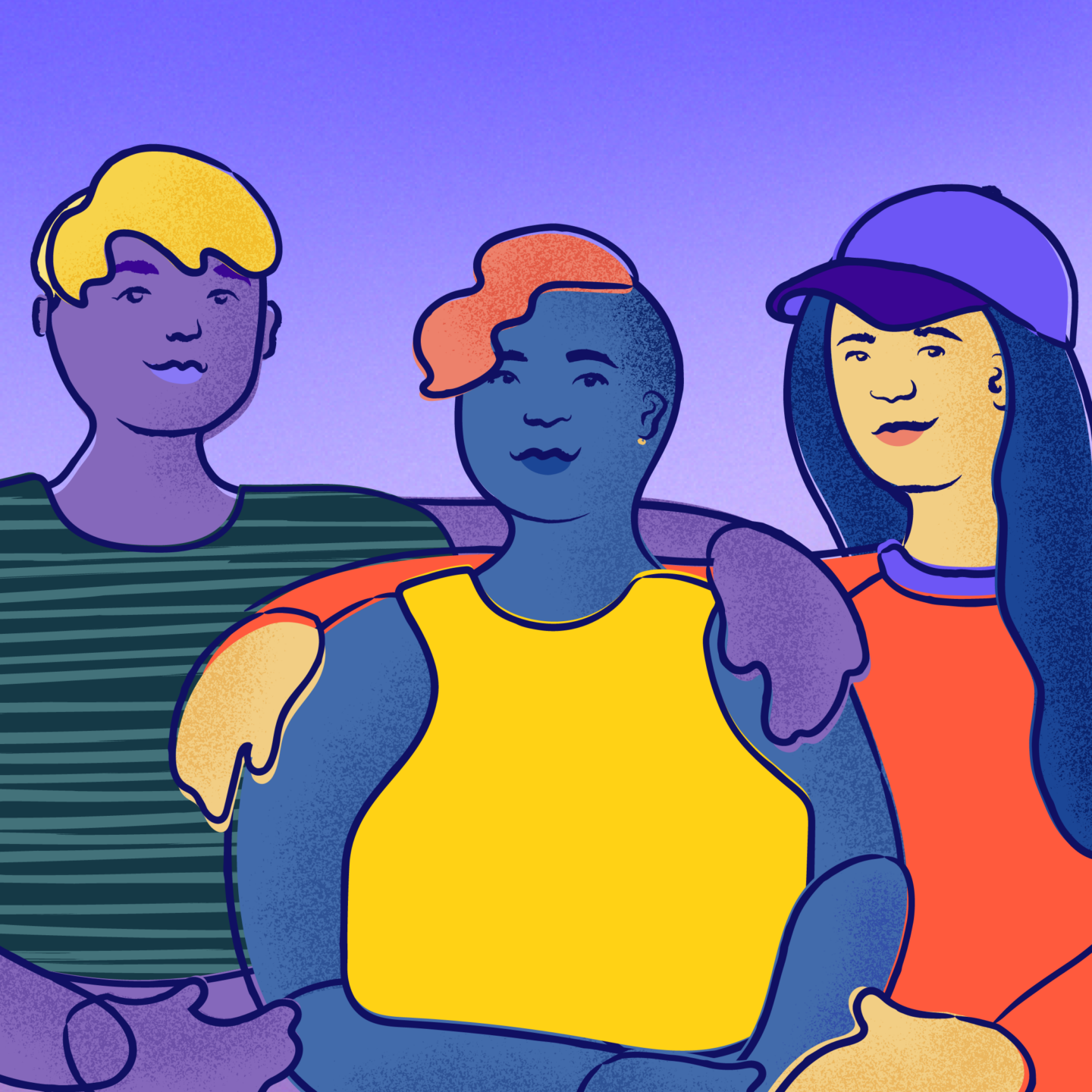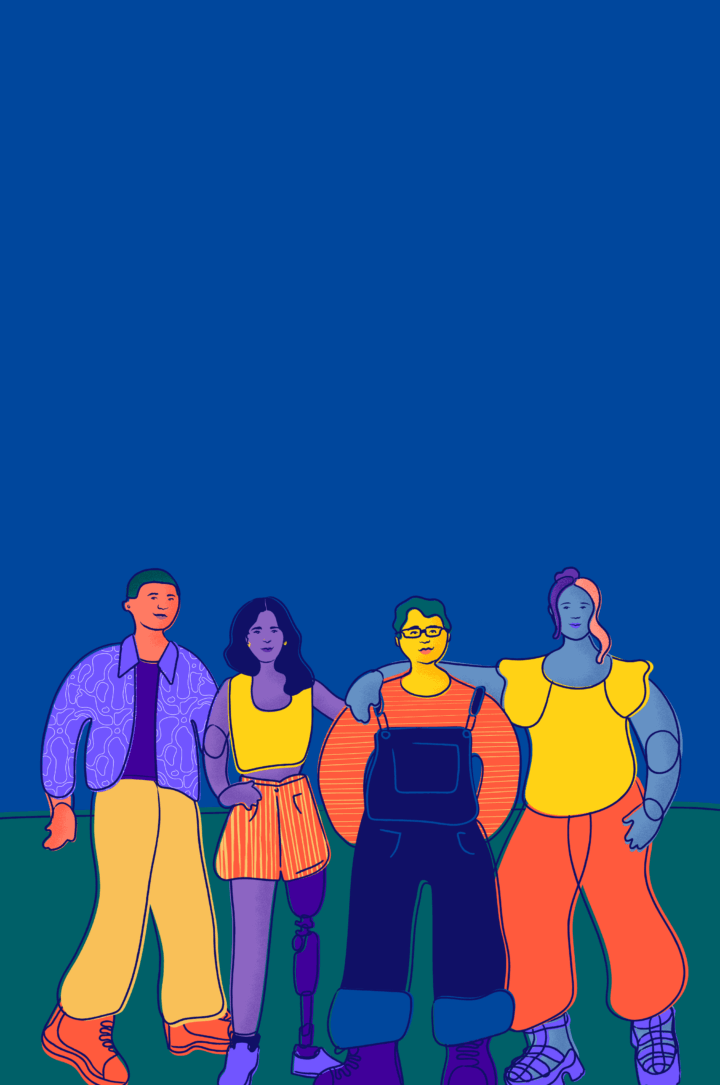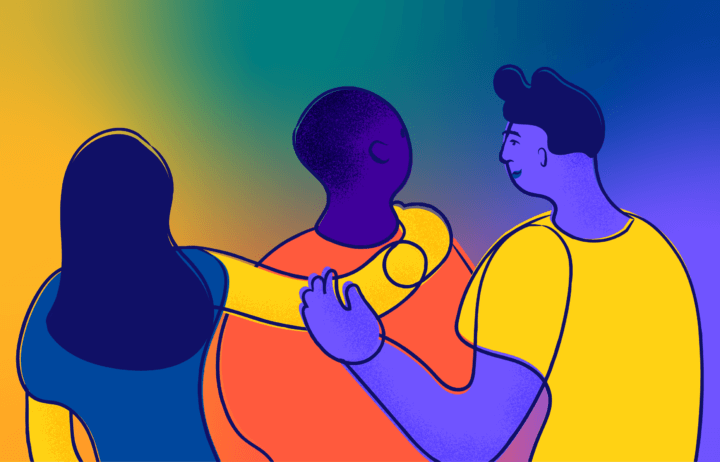Youth's Lives Every Day
This is a guide to learn more about how to support a Black LGBTQ+ young person’s mental health, and how anti-Black violence and anti-LGBTQ+ legislation impacts Black LGBTQ+ young people.
We know from our research that Black LGBTQ+ young people are at higher risk for poor mental health outcomes (like anxiety, depression, and suicide). We also know from our research that despite Black LGBTQ+ youth having similar rates of mental health disparities to all LGBTQ+ youth, they are significantly less likely to receive professional care. And because our political and social climate continues to be hostile and violent to Black and LGBTQ+ people, Black LGBTQ+ young people’s mental health continues to be placed at risk.
For Black LGBTQ+ young people, the intersections of their identities’ means they experience the world — and discrimination — differently than their non-Black and/or straight, cisgender peers. Let’s learn more about this and how this plays into mental health.
What is Intersectionality?
Intersectionality is a theory that explains the way in which individuals are empowered and oppressed by the intricate ways in which parts
of their identities connect. Every single person is unique; a person’s identity isn’t just made up of their race, ethnicity, gender, sexuality, religion, class, ability, nationality, or even location in the world, but the combination of these things and more.
The theory of intersectionality was first introduced by Black feminist scholar Kimberlé Crenshaw, who examined the ways in which Black women experience harsher oppression than White women because of the intersecting layers of their racial and gender identities.
Understanding intersectionality is crucial to understanding the unique experiences of Black LGBTQ+ young people. Our research illustrates how distinctly oppression exacerbates negative mental health conditions: Black LGBTQ+ young people experienced higher rates of suicide attempts and thoughts; experienced higher rates of depression and anxiety, and were shown to be more likely
to experience discrimination or harassment because of their identities when compared to their white peers.
It’s important to note that Black LGBTQ+ young people are not inherently prone to suicide risk because of their race, sexual orientation, or gender identity, but rather, they are placed at higher risk because of how they are mistreated and stigmatized in society.
Dealing with Current Events
Black LGBTQ+ young people have been repeatedly and unwillingly exposed to anti-Black violence, racism, and anti-LGBTQ+ rhetoric, whether through direct experience or witnessing events unfold online. This can cause undue amounts of anxiety and stress, among other feelings. If you’re a Black LGBTQ+ young person, you may be feeling:
- Grief. You may experience sorrow because of the senseless deaths of so many Black Americans, including numerous Black trans women over many years. This grief isn’t simply about recent events. For many, this grief has compounded over time.
- A sense of helplessness. You might feel like there’s nothing you can do because you’re only one person. This helplessness can be rooted in the sense that you are a single person, with a single voice.
- A sense of hopelessness. It’s possible that the long history of systemic racism can make you feel as though things will never change. As a person who may hold multiple marginalized identities, sometimes it seems like we as a country may never really have equality.
Dealing with Current Events
- Disconnection from White allies. You may distance yourself from white allies who are supportive of the Black community. This may be because it can seem burdensome to share your experience or put your complex thoughts into words. Or it may be that you are feeling anger towards people who share that identity.
- Rage. Coverage of Black Americans who were unjustly killed is all over social media and newsfeeds, and it can leave you feeling rage. This rage could be directed towards individuals or institutions.
- Fear. You may be experiencing a great deal of fear. The things that are happening right now are scary. Fear is a normal reaction to these events; in fact, fear is a protective emotion that is your body’s warning sign that something is dangerous.
- Numbness. You may be feeling nothing. For some people, feeling nothing is worse than feeling intense emotions. The events of recent months and years may be too much to process. Numbness can be your body’s reaction to being overwhelmed.
What Can I Do To Take Care of Myself?
Discovering what helps you feel cared for and relaxed can help you cope with everything going on in the world and in your personal life.
- Allow yourself to feel your emotions without judgment. This is probably the most challenging one, because it can be difficult to not be judgmental towards oneself but also because of a lack of space and time to do so. You may have obligations that do not allow you to process all of your emotions, prohibiting them from decreasing on their own.
- Work to decrease your emotional intensity. Some people may not have the space or time to allow these intense emotions to run rampant. You can use some tools to decrease your intensity (like getting rest, engaging in hobbies you enjoy, practicing meditation, and spending time in nature) so you can simply make it through the day. When you have more time, you can process some of the recent events.
- Pivot to action. Feeling out of control or feeling a lack of control can lead to negative emotions. If you engage in action you will likely experience a decrease in negative emotions. These actions could involve activism, participating in mutual aid, donating to organizations, lending an ear to others, or simply being helpful to someone else.
- Seek support. We also want to emphasize that we at The Trevor Project are here for you, 24/7 and for free. Visit TheTrevorProject.org/Help to connect to a trained crisis counselor.
Supporting Black & Brown Young People
The Trevor Project serves diverse communities across the country, and takes an intersectional approach to supporting the mental health of LGBTQ+ young people. We encourage you to use the following tips to support yourself, and to care for the Black LGBTQ+ young people in your life.
- Check in with Black LGBTQ+ young people. Ask the Black LGBTQ+ young people in your lives what their support system looks like during this time. In some cases, you may want to explore whether they have access to therapy or professional support. You can also tell them about online peer support, like TrevorSpace.org, which can be a great way to build connectivity and community.
- Allow Black LGBTQ+ young people to show up as their complete selves. For Black young people to thrive, the spaces they find themselves in must be fully supportive of who they are. Spaces that are meant to provide community and fellowship for Black people must also be purposefully affirming of LGBTQ+ people.
- Use your platform. Show up for Black people in your community. Amplify and support Black businesses, artists, and creators. Actively show up in your community to help spaces that support Black LGBTQ+ young people thrive.
- Center Black experiences and voices. Black lives matter, and amplifying their voices is an authentic way to share their unique experiences with the world.
- Educate yourself. Learning information about current events directly from reliable sources can put your mind at ease. It’s also important to educate yourself about racism, violence against the Black and LGBTQ+ communities, and police violence.
- Take a break from news and social media. While it can be great to stay informed, the world might seem like too much right now. Ask yourself how it would feel to unplug for a bit, or minimize the amount of information you’re taking in. Check-in with yourself around your mental health, set boundaries, and be honest about when you need to take a break.
- Learn the difference between sympathy and empathy. Empathy has the power to bring people together, connecting them over difficult emotions. Sympathy, while recognizing hardships in others’ experiences, can drive disconnection. We know that some days can be tougher than others, and we want to acknowledge that experiencing a range of emotions is normal. But no matter where you are, you are not alone.
The Trevor Project‘s crisis counselors are trained and always available to support the unique needs of Black LGBTQ+ young people, 24/7 and for free.


